Rivers
Chalk bed streams and rivers are a beautiful habitat that supports a wide diversity of flora and fauna. 85% of the worlds chalk bed rivers are in the South and East of England. The river Kennet and Lambourne which flow through Newbury are both Chalk Bed rivers. The river Kennet and its branches go right through our area of operations and are designated SSSI (Site of Special Scientific Interest), making them one of our key goals.
They typically have chalk and gravel bottoms which are clean and silt free. The best examples are where there is a fast flow of clean water, revealing all that is beneath to see with our naked eye. Streaming weeds such as Ranunculus that lay long flat, waving around in the current of the river. These provide excellent cover for fish that swim slowly against the current to keep their position stationary amongst the weeds.
The river beds provides an excellent habitat for fish to spawn, which you will see in our river in the warmer months. Species such as Grayling, Perch, Roach and Barbel can be seen and caught all along the River Kennet, but not in the numbers they used to be. There is no single cause for this, but various pressures from degradation of habitat that are actually quite easy and inexpensive for us to put right. So lets do just that!
American Signal Crayfish are an invasive species that are prolific in this area. When fish spawn you can literally stand there and watch the Crayfish following the fish and eating all the eggs, with a devastating consequence to fish numbers. Crayfish can be caught in traps like Crab and Lobster pots, using any smelly bait, ideally fish. They can then humanely be disposed of by crushing, or cooking them and eating them. Although I have to say the novelty of eating them wears off pretty quickly. Some people trap commercially and supply high end restaurants who use them in dishes such as a dressed Crayfish salad.
Silt has built up in the river and the weeds have died off, creating the wrong chemical balance of nutrients in the water. Well the recent flooding has helped us out there by washing a lot of that silt away. Having less Crayfish will help as they destroy the banks and eject soil into the river. Less tree cover will also help as the leaf decay in the river creates silt. More river plants will absorb the silt as food, Ranunculus even cleans the gravel like a brush as it moves around in the current. For particularly bad silt build up, physical removal is also an option for us, where a machine like a vacuum cleaner in reverse blasts the gravel to remove silt. We have seen this done successfully on other areas of the Kennet. This also helps loosen the gravel where it sometimes become compacted with decayed silt into a solid layer, where as fish want stones that they can jiggle around and lay their eggs in.
More Ranunculus and other river plants will create a more chemically balanced, oxygen rich, clean environment for the fish and their young. The reason the old plants died out is the lack of light reaching the river, the trees blocking the light are Crack Willow scrub which are of low value conservationally and grow quickly in abundance through out the area. Removing the trees from the South bank will allow more light to get to the river, then we can plant Ranunculus which we can locally source from a friend further upstream. Encouraging Reeds, Iris, Watermint, Gypsywort and other riparian plants also removes silt as they absorb it for food.
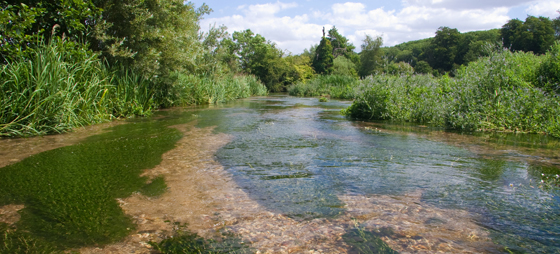
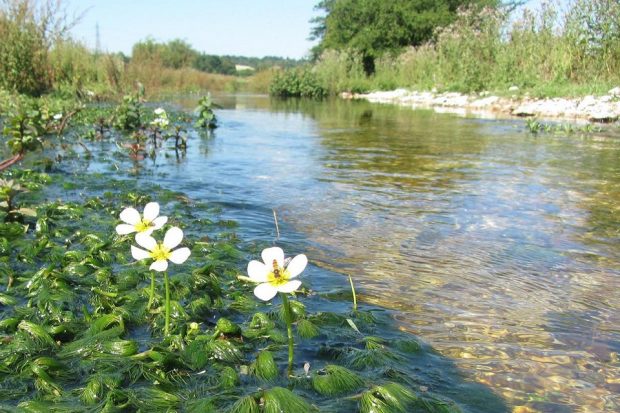
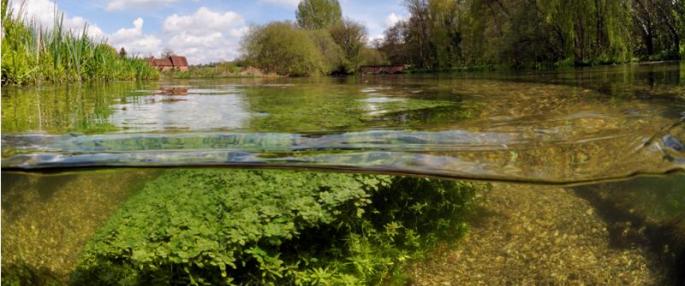
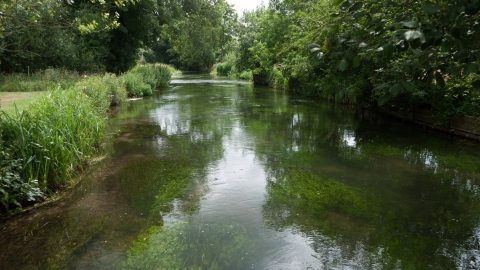
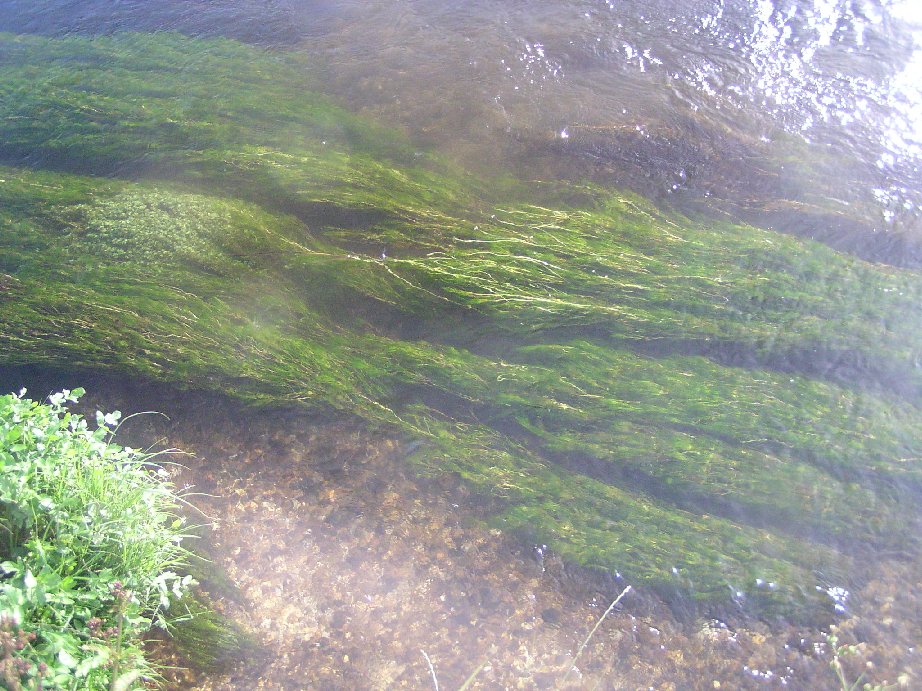
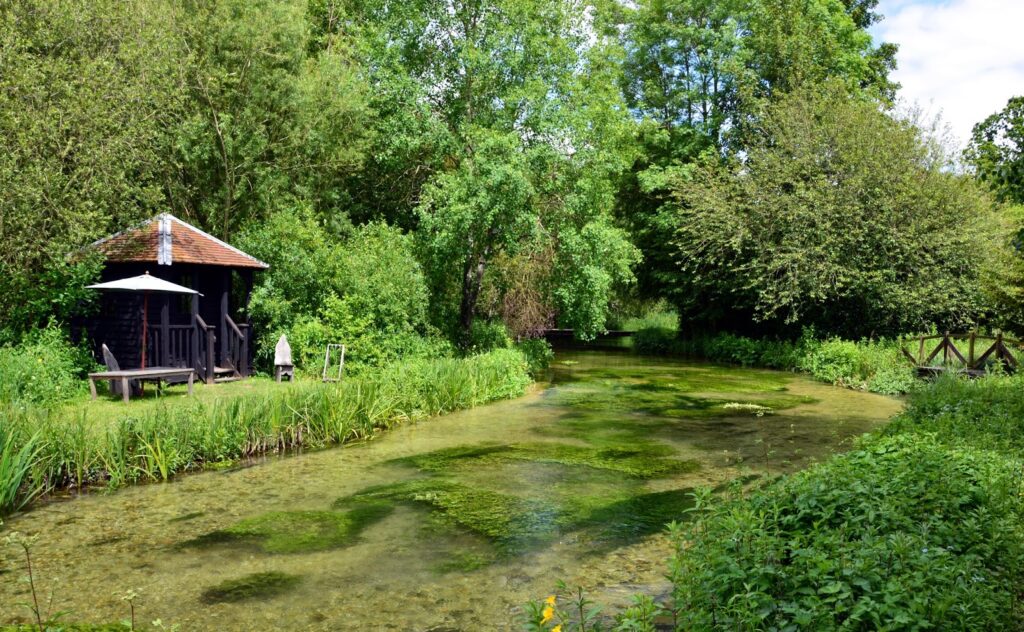
Restoration of the River Kennet
The aim of this project is to copy the success of other local conservation efforts we have been involved in; to encourage marine plant, invertebrate life, fish and birds. It is a very gentle touch approach making some small tweaks to avoid any unintended consequences. We have contacts with the EA and are familiar with the regulatory requirements for undertaking such work.
The eventual aim would see the stream in a condition more akin to the River Lambourne than its current form.
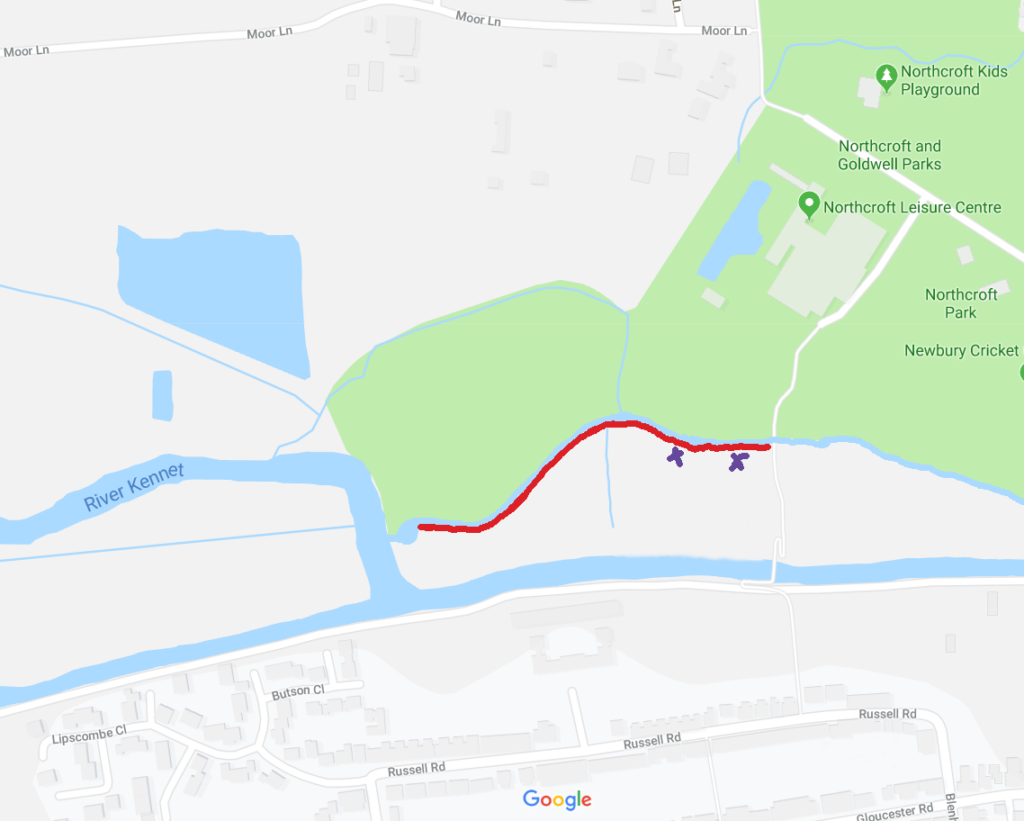
Objectives
- More light to stream through reduction of overgrown willow
- Litter removal
- Planting of beneficial marine plants
- Trapping of crayfish
- Gravel Cleaning
- Monitoring of fish spawning
- Ongoing maintenance
Next Steps
- Arrange pollarding of 2 large willows, marked with purple crosses on the map (previously done an estimated 10 years ago)
- Working party to cut brush willow and tidy up (leave all non-willow trees)
- Minor repair of damaged riverbank using all-natural materials in a manner that will not change the behaviour of the flow of water in the river. This will be limited to defending the worst affected areas
- Plant native river weed and reeds in the summer (sourced locally)
- Trap Crayfish in warmer months
- Uproot Ragwort